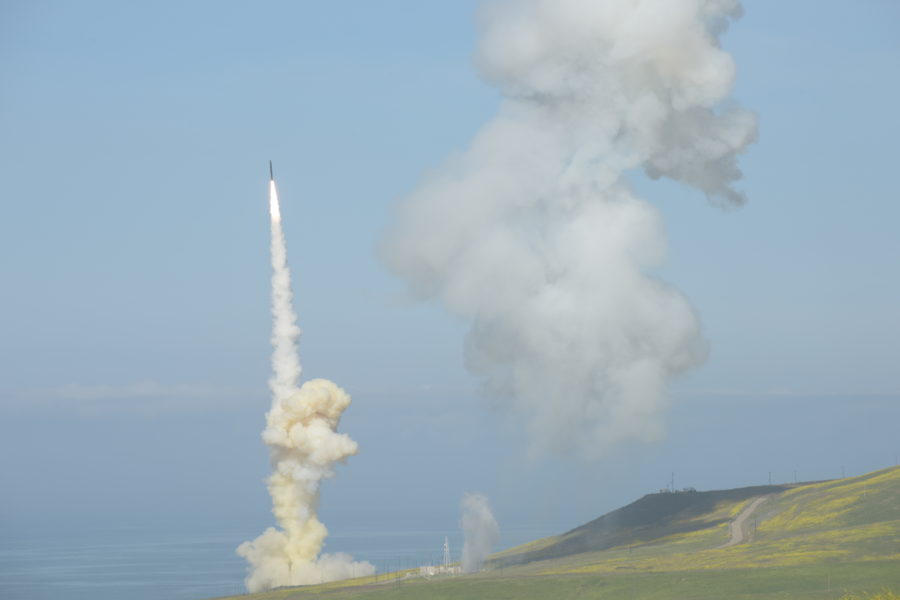The Missile Defense Agency on March 23 awarded Northrop Grumman and Lockheed Martin contracts worth a total of $7.6 billion to develop technology for the Next Generation Interceptor, which will replace aging ground-based interceptors and serve as the first layer of defense against intercontinental ballistic missiles aimed at the homeland.
Lockheed Martin received a total of $3.693 billion with a performance period through August 2025, while Northrop Grumman was awarded a total of $3.932 billion with a performance period through May 2026. The funding for the contract is limited to $1.6 billion through fiscal 2022.
“Allowing a technology development phase will help ensure that the NGI is an efficient and effective part of an integrated Missile Defense System solution by permitting the department to further analyze requirements and make necessary adjustments in preparation for the product development phase,” the contract announcement states.
Lockheed Martin announced it had teamed with Aerojet Rocketdyne for the project, before Lockheed announced it was acquiring the company.
“We are excited and proud the MDA entrusted Lockheed Martin to lead the development of this game-changing system that will greatly improve our nation’s security for decades to come,” said Sarah Reeves, vice president of Next Generation Interceptor Program at Lockheed Martin, in a release. “We have been working toward supporting never-fail missions such as NGI for decades, and our team has the expertise and shared vision required to deliver on the MDA’s need to evolve GMD.”
Northrop Grumman is teaming with Raytheon Technologies for the project.
“There is a critical timeline for fielding this capability and our team brings together the industry’s top missile defense talent, agile design, and manufacturing practices, and state-of-the-art operational factories to support the MDA and our nation’s defense against these evolving threats,” said Scott Lehr, vice president and general manager, launch and missile defense at Northrop Grumman, in a release.
Boeing announced it was entering the competition but did not receive a contract.
Because of Raytheon’s involvement in the program, Defense Secretary Lloyd J. Austin III, a former member of Raytheon’s board, recused himself from the decision. Deputy Defense Secretary Kathleen Hicks made the decision to proceed with modernizing the current Ground-based Midcourse Defense (GMD) system.
“NGI is the result of the first holistic technical assessment of homeland defenses the department has conducted since initial system operations began in 2004,” MDA Director Vice Adm. Jon Hill said in a release. “By planning to carry two vendors through technology development, MDA will maximize the benefits of competition to deliver the most effective and reliable homeland defense missile to the warfighter as soon as possible. Once fielded, this new homeland defense interceptor will be capable of defeating expected threat advances into the 2030s and beyond.”
USAF Gen. Glen D. VanHerck, commander of U.S. Northern Command and North American Aerospace Defense Command, told lawmakers earlier this month that moving forward on NGI “no later than 2028” is needed to ensure the U.S. can defend against ballistic missile threats from actors such as North Korea and Iran.
Ground based interceptors provides “deterrence by denial” and are needed to provide advanced capabilities to counter new threats, such as decoys in ballistic missile launches, he said.
